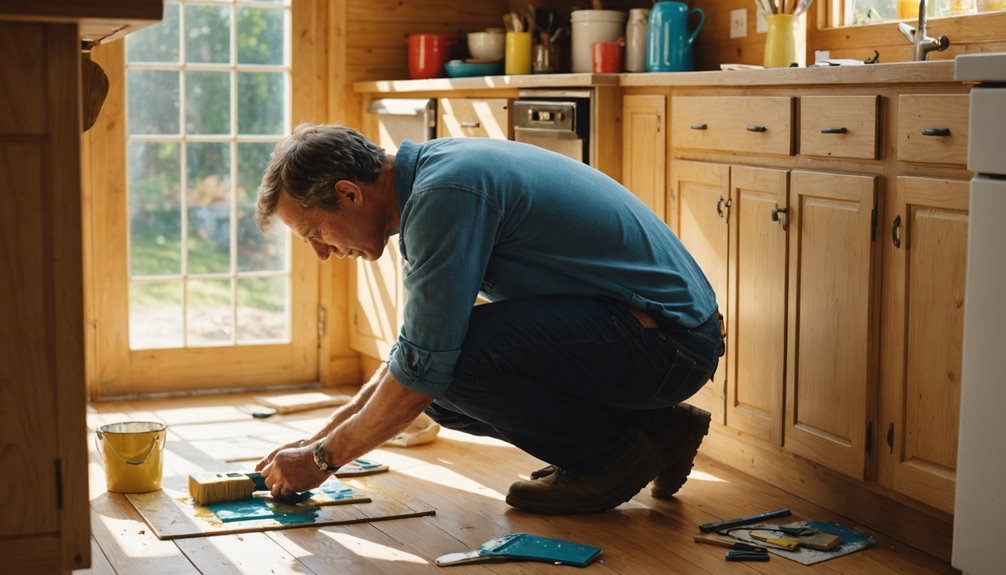A strong appraisal can make all the difference when buying or selling a home in Florida. Appraisers determine a home’s value based on many factors, and minor improvements can lead to a higher valuation. By following essential appraisal tips, homeowners can take control of the process and set their property up for success.
First impressions matter, and curb appeal plays a significant role in an appraiser’s evaluation. Studies show that homes with well-maintained landscaping and fresh paint sell for up to 7% more than similar homes with neglected exteriors. A tidy lawn, trimmed bushes, and a welcoming entryway can make a home look more valuable. Inside, deep cleaning, decluttering, and neutral décor create a bright, open feel that helps appraisers see the home’s full potential.
Beyond appearance, documentation is key. Homeowners should gather records of all upgrades, such as new roofs, kitchen remodels, or energy-efficient appliances. Receipts, inspection reports, and permits help prove the home’s true worth. Reviewing recent sales of similar homes in the neighborhood also provides valuable context. By using these essential appraisal tips, sellers can confidently prepare for their home’s evaluation and maximize its value.
Key Takeaways
- Enhance curb appeal through thorough cleaning, landscaping, and minor repairs to create a positive first impression.
- Document all upgrades and maintain receipts to substantiate investments and support appraiser evaluations.
- Analyze recent comparable sales to establish a realistic property value and understand market conditions.
- Prepare for the appraisal visit by conducting a self-inspection and gathering relevant documentation of renovations and features.
- Highlight energy efficiency through certifications and upgrades, as energy-efficient homes often command higher resale values.
Boost Curb Appeal
Curb appeal serves as the primary impression a property makes on potential buyers and passersby, greatly influencing its perceived value. Effective exterior maintenance is crucial; power washing surfaces removes grime, while cleaned windows improve natural light. Inspecting gutters and addressing roofing issues, such as missing shingles, contribute to structural integrity and favorable initial impressions. Regular lawn care, including mowing and weed removal, fosters a neat appearance. Landscaping improvements, such as trimmed gardens and vibrant flower boxes, further boost visual appeal. Choosing a new front entrance door can also enhance the overall aesthetic and security of your home. Neighborhood safety ratings can significantly influence buyer decisions, making curb appeal even more critical. Softening exterior corners with shrubs creates an inviting atmosphere. Together, these actions establish a cohesive and welcoming aesthetic, encouraging potential buyers to imagine themselves within the property, ultimately increasing its marketability and value.
Document Upgrades
Documenting upgrades effectively is essential for maximizing home appraisal value. Maintaining detailed receipts and compiling before-and-after photos not only provides evidence of the improvements made but also offers a visual narrative of the home’s advancements. This organized approach facilitates a more precise understanding for appraisers, ensuring that all upgrades are accurately represented and valued. Additionally, making minor repairs before the appraisal can further enhance the home’s overall condition and appeal. Moreover, engaging a licensed inspector for professional home inspections can help identify critical issues that may need addressing prior to the appraisal, further boosting your home’s value.
Keep Detailed Receipts
Keeping detailed receipts for upgrades is essential for homeowners aiming to improve their property’s value during an appraisal. These documents not only substantiate the financial investments made but also demonstrate a commitment to property upkeep. Receipts can validate improvements, influencing both buyer perception and appraiser evaluations favorably. Additionally, having documented improvements and repairs can significantly enhance your home’s market value when it comes time to sell.
| Upgrade Type | Example Receipts |
|---|---|
| Major Upgrades | New HVAC system |
| Cosmetic Enhancements | Kitchen Remodel |
| Energy Efficiency | Solar panel installation |
| Structural Upgrades | Roof replacement |
| Maintenance Records | Landscaping services |
Compile Before/After Photos
Compiling before and after photos serves as an invaluable method for homeowners to substantiate renovations during the appraisal process. These images provide tangible evidence of upgrades, helping to prevent disputes regarding completed work. They also assist appraisers in determining reconstruction costs by visually documenting material quality, such as distinguishing between wood and composite finishes. Furthermore, photos contextualize improvements, illustrating improved utility through features like closet organizers. Prioritizing high-impact upgrades, such as kitchens and bathrooms, guarantees that significant renovations are highlighted. To optimize effectiveness, homeowners should utilize natural lighting, capture detailed close-ups, and organize images logically, labeling them with project dates and budgets. This thorough visual documentation strengthens the case for a favorable appraisal outcome, as photographs serve as documentation for the appraisal process and enhance accuracy through visual comparisons with MLS listings.
Perform Minor Repairs

Addressing minor repairs can significantly improve a property’s appeal during an appraisal. Fixing plumbing issues, such as leaky faucets or slow drains, not only prevents potential red flags but also signals a well-maintained home. Furthermore, touching up paint can enhance aesthetics and create a more inviting atmosphere, ultimately contributing to a favorable impression on appraisers and potential buyers alike. Additionally, deep cleaning ensures that the home looks its best and allows buyers to see its full potential. Sellers should also consider conducting a pre-listing inspection to identify and resolve any hidden issues before the appraisal process begins.
Fix Plumbing Issues
Fixing plumbing issues is essential for maintaining a home’s value and ensuring a smooth appraisal process. Minor leaks, clogged drains, or faulty fixtures can lead to significant water damage if left unattended. These problems not only affect the functionality of the home but can also result in negative adjustments during an appraisal. For instance, repairs such as fixing a faucet can range from $50 to $500, and lenders may require repairs for safety and soundness before approving loans. Moreover, unresolved plumbing issues can escalate, leading to higher repair costs. Regular inspections and prompt attention to minor repairs can help sustain the home’s market value, creating a sense of stability and belonging for potential buyers.
Touch Up Paint
A well-executed touch-up paint job can significantly improve a home’s appeal and potentially increase its appraisal value. By addressing visible imperfections such as peeling paint and cracked tiles, homeowners can boost overall aesthetics. Fresh, neutral paint not only revitalizes a space but also raises perceived value. Minor repairs, using precision tools, should focus on specific areas to maintain the surrounding texture. Cost-effective solutions, such as assembling a touch-up kit, allow for efficient repairs under the “$500 Rule,” often yielding disproportionate valuation gains. A touch-up kit facilitates using the same applicator as the original paint, ensuring a flawless and blended finish on patched areas. Documenting these improvements is crucial during appraisals, as showcasing recent repairs and upgrades can create a favorable initial impression, ultimately influencing the appraisal outcome positively.
Deep Clean and Declutter
While preparing a home for appraisal, deep cleaning, and decluttering play crucial roles in improving its general appeal and perceived value. Removing private artifacts, such as family photos and unique decor, helps create a neutral environment that potential buyers can picture as their own. Clearing kitchen countertops of appliances and sorting household items into keep, sell, or donate categories further elevates visual clarity. High-impact areas like bathrooms and kitchens require thorough cleaning, including scrubbing grout and polishing appliances. Organized storage spaces, utilizing matching hangers and labeled bins, improve functionality. Moreover, addressing minor neglect, such as repairing faucets or touching up paint, contributes to a polished presentation, ultimately maximizing the home’s worth during the appraisal process.
Analyze Comparable Homes

Analyzing comparable homes involves a thorough examination of recent sales to establish a baseline for property valuation. This process necessitates a careful comparison of property features, including size, layout, and amenities, to guarantee that the assessment reflects the subject home’s true market potential. By systematically evaluating these factors, people can gain insights into pricing strategies and market trends that are essential for informed decision-making. Additionally, understanding local market conditions can further enhance the accuracy of your appraisal by highlighting the competitive landscape in which your home is situated.
Research Recent Sales
A practical evaluation of comparable home sales is crucial for accurate property appraisals. Appraisers utilize Comparative Market Analysis (CMA) to examine sales of similar properties within the last 3–6 months, ensuring relevance to current market conditions. Key considerations include:
- Location that mirrors the subject property
- Amenities that improve livability
- The square footage that aligns with buyer expectations
- Transaction terms that reflect typical market scenarios
Compare Property Features
Accurate property appraisals necessitate a thorough comparison of similar homes’ physical features. Evaluating key attributes such as square footage, bedroom and bathroom count, and outdoor amenities is crucial. This process aids in establishing a fair market value.
| Feature | Subject Property | Comparable 1 | Comparable 2 |
|---|---|---|---|
| Square Footage | 2,000 sqft | 1,950 sqft | 2,100 sqft |
| Bedrooms/Bathrooms | 3/2 | 3/2 | 4/2 |
| Lot Size | 5,000 sqft | 4,800 sqft | 5,200 sqft |
| Condition | Good | Fair | Excellent |
Prepare for the Appraisal Visit
Preparing for an appraisal visit requires homeowners to take a systematic approach that addresses both the physical condition of the property and the documentation that supports its value. This involves not only enhancing the visual appeal but also organizing pertinent information that can substantiate the home’s worth.
- Conduct a self-inspection to identify and repair leaks or damages.
- Gather receipts and invoices for all renovations to demonstrate investment.
- Research recent comparable sales to provide context for market value.
- Develop a home fact sheet detailing distinctive features and specifications. Additionally, consider understanding Florida’s Homestead Exemption to potentially reduce your taxable property value and enhance your home’s appeal to appraisers.
Highlight Energy Efficiency

Highlighting energy efficiency is crucial for homeowners aiming to improve their property’s appraisal value. Energy Performance Certifications, such as HERS® Index Scores and ENERGY STAR® labels, serve as reliable benchmarks, increasing buyer trust and indicating potential utility savings. Homes with Earth Advantage certifications have been linked to an 8% increase in resale value, while LEED certifications provide standardized metrics that contribute measurable value. Furthermore, energy-efficient upgrades, like innovative HVAC systems and insulation retrofits, not only improve comfort but also reduce long-term costs and elevate property appreciation. Documenting energy upgrades through utility bill samples and energy audit reports can further validate efficiency improvements, making homes more attractive to eco-conscious buyers and ultimately leading to faster sales and higher premiums. Additionally, integrating community engagement in sustainability practices can enhance the value perception of your home within a thriving neighborhood like Lakewood Ranch.
Enhance Interior Spaces
Improving interior spaces greatly influences a home’s appraisal value by aligning with current buyer preferences and market trends. Appraisers evaluate design trends, emphasizing timeless aesthetics that combine modern touches with neutral decor, thereby appealing to a broad audience. Implementing effective staging strategies further raises perceived value through:
- Decluttered spaces that highlight functionality
- Neutral color palettes that invite diverse tastes
- Thoughtfully arranged furniture that underscores the room’s purpose
- Inviting lighting that improves ambiance and warmth
Utilizing high-quality materials and maintaining a cohesive aesthetic are crucial for maximizing appeal. Additionally, optimizing layouts to improve usability not only increases desirability but also fosters sentimental connections, encouraging potential buyers to imagine their future homes. Ultimately, these improvements contribute considerably to a favorable appraisal outcome. Furthermore, understanding additional homeownership costs can help you budget effectively for these enhancements, ensuring they align with your overall financial preparation.
Focus on Key Areas

Focusing on key areas of a home is essential for maximizing appraisal value, as specific aspects greatly influence a property’s total appeal. Exterior maintenance, including manicured lawns, trimmed shrubs, and fresh paint on doors, improves curb appeal and creates an inviting initial impression. Structural integrity should be prioritized by addressing foundation issues, ensuring roof quality, and verifying functional windows and doors. Updating functional components like electrical systems and modernizing kitchens and bathrooms align the home with current market standards. Moreover, optimizing square footage through efficient layouts and highlighting potential expansion areas can powerfully attract buyers. By concentrating on these vital areas, homeowners position their property more favorably within the competitive authentic estate market. Furthermore, enhancing curb appeal can significantly impact first impressions and overall marketability.
Maintain a Neutral Environment
Creating a neutral environment within a home is crucial for appealing to a wide range of potential buyers, as it facilitates their ability to imagine the space as their own. Neutral decor choices, such as soft grays and off-whites, create a versatile backdrop. Avoiding hyper-customized features guarantees inclusivity for diverse tastes.
To achieve a neutral ambiance, consider the following:
- Remove family photos and unique decor items.
- Stage rooms with ideal furniture arrangement and lighting.
- Thoroughly clean to eliminate any odors or pet-related scents.
- Highlight architectural features without overwhelming customization.
Gather Relevant Documentation

Gathering relevant documentation is vital for a thorough home appraisal, as it lays the groundwork for an accurate valuation process. Key property specifications include details such as location, age, size, and design, complemented by floor plans and zoning data that illustrate the property’s context. Recent sales data of comparable properties, alongside local market trends, provide a necessary framework for justifying the appraisal value. Financial records, including tax assessments and maintenance costs, further substantiate claims of value improvements. Moreover, compliance documents, such as certifications and communication logs with appraisers, guarantee transparency. Collectively, this documentation not only supports a precise valuation but also fosters trust and belonging within the community by affirming the property’s worth in the broader market context. Understanding Florida’s real estate market can also enhance the appraisal process by providing insights into local demand and property values.
Frequently Asked Questions
How Long Before an Appraisal Should I Start Preparing My Home?
Preparing a home for appraisal should ideally begin several weeks in advance. This timeframe allows for necessary repairs, cleaning, and documentation gathering, ensuring the property presents most effectively to achieve the best possible valuation.
Should I Be Present During the Appraisal Process?
Whether to be present during the appraisal process is a strategic decision. Being present allows for direct communication, enables the sharing of relevant documentation, and offers the opportunity to emphasize distinctive property features beneficial for valuation.
What Specific Features Do Appraisers Typically Look For?
Appraisers navigate a property like seasoned sailors charting unknown waters. They assess structural integrity, interior layout, exterior appeal, and market comparisons, ensuring each facet aligns harmoniously to determine the home’s total value and potential.
How Can I Ensure My Home Smells Fresh for the Appraisal?
Thorough cleaning, odor neutralization, and strategic use of natural fragrances are crucial to guaranteeing a home smells fresh for appraisal. Regular maintenance and prompt repairs can significantly contribute to a pleasant atmosphere, enhancing general appeal.
Will Landscaping Improvements Affect My Home’s Appraisal Value?
The adage “first impressions last” highlights landscaping’s vital role in appraisals. Well-maintained yards improve perceived value, while neglect can considerably decrease it. Strategic landscaping improvements yield remarkable returns, positively influencing buyers’ perceptions and total property value.
What Are Some Essential Appraisal Tips to Increase My Home’s Value?
To boost your home’s appraisal, focus on curb appeal, minor repairs, and a clean, updated interior. Providing documentation for upgrades and researching comparable home sales can also help support a higher valuation.
Conclusion
To summarize, maximizing a home’s worth requires a tactical method encompassing diverse elements from curb appeal to documentation. Remarkably, homes that exhibit excellent curb appeal can fetch up to 10% more than similar properties lacking visual appeal. By implementing the discussed appraisal tips, homeowners not only improve their property’s marketability but also position themselves favorably in a competitive genuine estate landscape. Ultimately, a well-prepared home can significantly influence appraisal outcomes and attract potential buyers.
References
- https://www.experian.com/blogs/ask-experian/how-to-increase-home-appraisal-value/
- https://opentextbc.ca/writingforsuccess/chapter/chapter-9-citations-and-referencing/
- https://quadwalls.com/blog/how-to-prepare-for-a-home-appraisal-10-best-tips/
- https://www.datopian.com/playbook/dojo/writing-a-data-oriented-blog-post
- https://www.statefarm.com/simple-insights/residence/raise-your-homes-worth-with-these-simple-appraisal-tips
- https://www.aspenwindows.com/posts/tips-and-tricks-to-increase-your-homes-curb-appeal
- https://hoganhomestexas.com/preparing-for-a-home-appraisal-to-maximize-its-value/
- https://www.bankrate.com/real-estate/add-curb-appeal/
- https://bearhomes.com/2024/04/15/maximize-your-homes-value-tips-for-improving-curb-appeal/
- https://www.youtube.com/watch?v=-YWfmA6Bzb4







